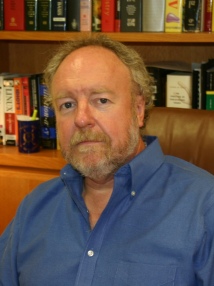Summary
Professor Michael Lovett holds the Chair of Systems Biology at NHLI Imperial College London. He received his B.Sc. from the University of Edinburgh in Molecular Biology and his Ph.D., in Biochemistry from Imperial College. He then conducted postdoctoral work in Human Genetics with Professor Charles Epstein at the University of California San Francisco (UCSF). He was then appointed as an Assistant Professor of Genetics at UCSF. In 1987 he joined Genelabs Inc, a start up biotechnology company, in the San Francisco bay area where he was Senior Director of Molecular Genetics. Shortly after Genelabs went public (IPO) in 1992, Dr. Lovett returned to academia as Associate Professor of Biochemistry at the University of Texas Southwestern Medical Center in Dallas but also continued to administer a group within biotech for over a year. In 1999 Dr. Lovett and his wife, Anne Bowcock were recruited to head the Division of Human Genetics at Washington University School of Medicine in St Louis. He held the post of Professor of Genetics and Pediatrics and Division Head at Washington University until January 2013. when he returned to the UK and to Imperial College. Professor Lovett developed one of the most innovative and useful gene identification technologies in the human genome project. These methods led to the rapid discovery of many causal mutations in Mendelian disorders. He then moved into the interface between developmental biology, genomics and systems biology where he applied innovative new micro-cDNA and microarray approaches to the investigation of regeneration and species-specific variation.
During this time he also applied his nucleic acid capture technologies to the problem of selectively identifying variation within human genomes. His seminal paper in 2005 directly led to the current revolution in exome sequencing and targeted genomic capture. Dr. Lovett has been, and continues to be, a thought–leader in genomics and next generation sequencing. He is also the leader in applying genomics to the regenerative epithelia of the inner ear (most relevant to hearing loss and balance disorders) and to the genetic wiring of the vertebrate face. These insights and methodologies apply to many other systems, particularly the respiratory system. Dr. Lovett’s expertise covers genomics, computational biology, developmental biology, genetics and neuroscience. He has continued his connections and interest in translating his unique expertise to the pharmaceutical sector through numerous consultancy relationships. Dr. Lovett was a founder of the Human and Statistical Genetics Ph.D. program at Wash U, was course master of the mammalian genetics core course and former head of the biostatistical masters (MSc) program research course.
Dr. Lovett has a long record of NIH funding and consequently, a long career in grant and policy review at NIH. He has participated in scientific reviews from the early days of the genome project up to the most recent debates about personal genome sequencing. He has served in many roles within the American Society of Human Genetics (ASHG). Most recently, he was Program Chairman of the annual meeting and Chairman of the nominating committee of the ASHG, the largest professional organization of human geneticists in the world. His major research interests include genome technology development, particularly single cell genomics, the identification of genes involved in human deafness and craniofacial abnormalities, and systems biology approaches focused upon epithelial disease, repair and regeneration.
Publications
Journals
Wan L, Lovett M, Warchol ME, et al., 2020, Vascular endothelial growth factor is required for regeneration of auditory hair cells in the avian inner ear, Hearing Research, Vol:385, ISSN:0378-5955
Taylor RR, Filia A, Paredes U, et al., 2018, Regenerating hair cells in vestibular sensory epithelia from humans, Elife, Vol:7, ISSN:2050-084X
Warchol ME, Stone J, Barton M, et al., 2017, ADAM10 and γ-secretase regulate sensory regeneration in the avian vestibular organs, Developmental Biology, Vol:428, ISSN:0012-1606, Pages:39-51
Forge A, Taylor RR, Dawson SJ, et al., 2017, Disruption of <i>SorCS2</i> reveals differences in the regulation of stereociliary bundle formation between hair cell types in the inner ear, Plos Genetics, Vol:13, ISSN:1553-7404
Mann ZF, Thiede BR, Chang W, et al., 2014, A gradient of Bmp7 specifies the tonotopic axis in the developing inner ear, Nature Communications, Vol:5, ISSN:2041-1723

